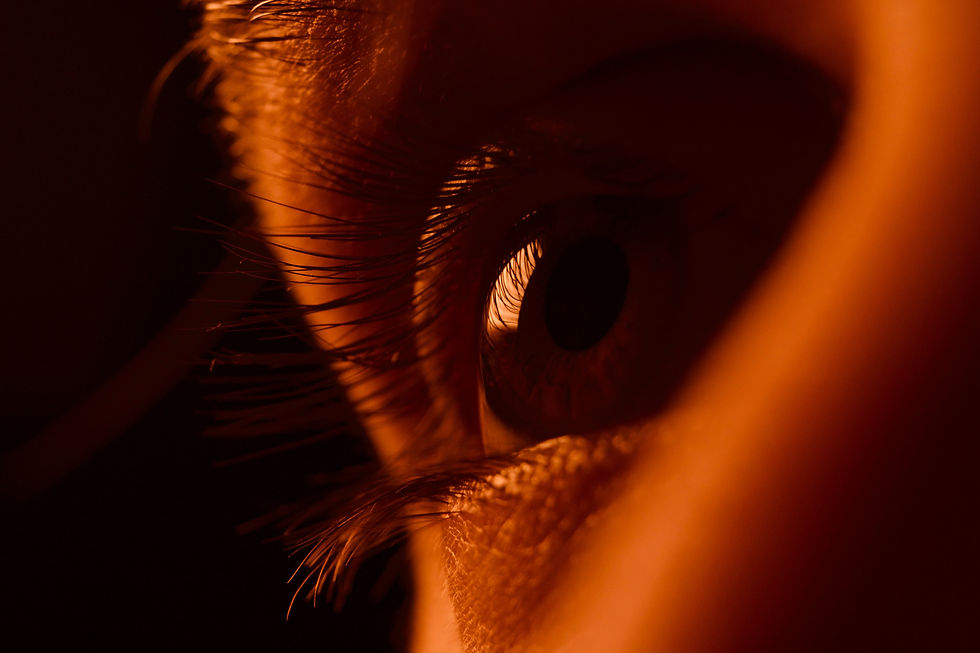Why Normal Eye Pressure Doesn’t Mean You’re Safe from Glaucoma
- Keshav Narain, M.D.

- Oct 21
- 3 min read
Have you ever been told during an eye exam that your eye pressure is “normal,” and felt relieved knowing that means you’re safe from glaucoma? Unfortunately, that’s not always the case. While high eye pressure (also known as intraocular pressure or IOP) is a major risk factor for glaucoma, it’s not the whole story. In fact, many people develop glaucoma—even with eye pressures that fall within the normal range. This condition is called Normal-Tension Glaucoma (NTG), and it’s far more common than most people realize.

Understanding Glaucoma Beyond Pressure
Glaucoma is often described as a “silent thief of sight” because it gradually damages the optic nerve—the cable that connects your eye to your brain—without noticeable symptoms until vision loss has already begun. Traditionally, doctors linked this damage to high eye pressure. However, research has shown that some people’s optic nerves are more vulnerable, meaning they can develop glaucoma even when their IOP is within the so-called “safe” range (typically 10–21 mmHg).
In Normal-Tension Glaucoma, the optic nerve suffers damage despite normal readings. Scientists believe this may be due to factors such as:
Poor blood flow to the optic nerve
Vascular dysregulation, or abnormal control of blood vessel tone
Sleep apnea or systemic low blood pressure, especially at night
Oxidative stress and mitochondrial dysfunction in the nerve cells
This means relying only on pressure readings to detect glaucoma can miss cases that are quietly progressing beneath the surface.
The Limitations of Eye Pressure Alone: Normal Eye Pressure and Glaucoma
Think of eye pressure as just one number in a much larger equation. A “normal” IOP doesn’t guarantee your optic nerve is healthy. Some people can tolerate higher pressures without damage, while others lose vision at much lower levels.
That’s why modern glaucoma diagnosis goes far beyond a pressure check. At South Bay Retina and other advanced eye centers, comprehensive glaucoma screening includes:
Optical Coherence Tomography (OCT) – to image the optic nerve and detect early thinning
Visual field testing – to assess functional vision loss
Corneal thickness measurement (pachymetry) – since thinner corneas can make IOP readings appear deceptively low
Blood flow analysis and retinal imaging – to evaluate vascular health and optic nerve perfusion
Only by combining these tests can doctors uncover hidden glaucoma—even when pressure appears “normal.”
Protecting Your Vision: What You Can Do
If you have risk factors such as family history, diabetes, sleep apnea, or low blood pressure, you could still be at risk for Normal-Tension Glaucoma. Here’s how you can take proactive steps:
Schedule regular, comprehensive eye exams – especially after age 40.
Ask for a full glaucoma workup – not just a pressure check.
Manage systemic conditions like hypertension, diabetes, or vascular disorders that affect optic nerve blood flow.
Prioritize healthy habits – regular exercise, good sleep, and antioxidant-rich foods support optic nerve health.
Early detection is key. Once vision is lost to glaucoma, it cannot be recovered—but timely diagnosis and treatment can preserve your remaining sight for years to come.
Final Thoughts
Normal eye pressure doesn’t always mean normal eye health. Glaucoma is complex and multifactorial, and its silent nature means only thorough testing can truly determine your risk.
If you’re concerned about your optic nerve health or have been told your pressures are “normal” but haven’t had a full glaucoma evaluation, it’s time to take the next step.
Connect with Us!
You can reach us and learn more through the following channels:
Website: https://www.southbayretina.com
Phone: (408) 294-3534
Serving: San Jose, Cupertino, and the greater South Bay Area
𝗬𝗼𝘂𝗧𝘂𝗯𝗲: youtube.com/@NarainEye
𝗜𝗻𝘀𝘁𝗮𝗴𝗿𝗮𝗺: https://www.instagram.com/south_bay_retina
𝗙𝗮𝗰𝗲𝗯𝗼𝗼𝗸: https://www.facebook.com/narain1
References
National Eye Institute. (2023). Glaucoma: What You Need to Know. https://www.nei.nih.gov/learn-about-eye-health/eye-conditions-and-diseases/glaucoma
American Academy of Ophthalmology. (2023). Normal-Tension Glaucoma. https://www.aao.org/eye-health/diseases/normal-tension-glaucoma
Weinreb, R. N., Aung, T., & Medeiros, F. A. (2014). The pathophysiology and treatment of glaucoma: A review. JAMA, 311(18), 1901–1911. https://doi.org/10.1001/jama.2014.3192
Caprioli, J., & Coleman, A. L. (2010). Blood pressure, perfusion pressure, and glaucoma. American Journal of Ophthalmology, 149(5), 704–712. https://doi.org/10.1016/j.ajo.2010.01.018
WATCH THE FULL EPISODE'S HERE:
LISTEN TO THE PODCAST EPISODES:
.png)



Comments